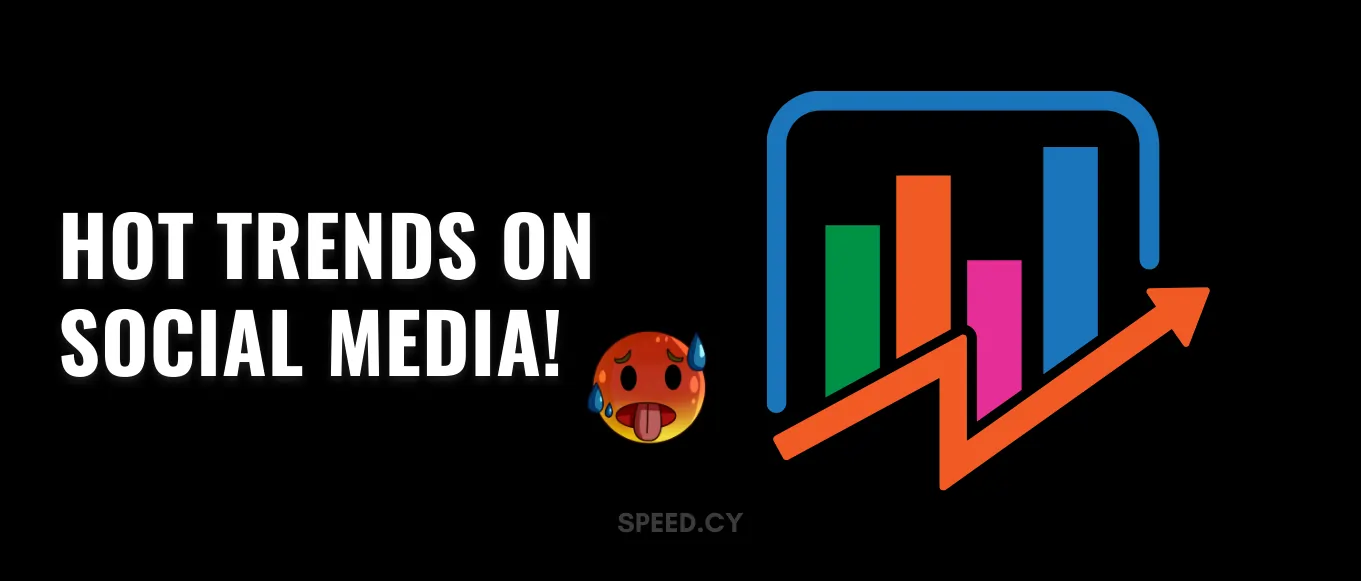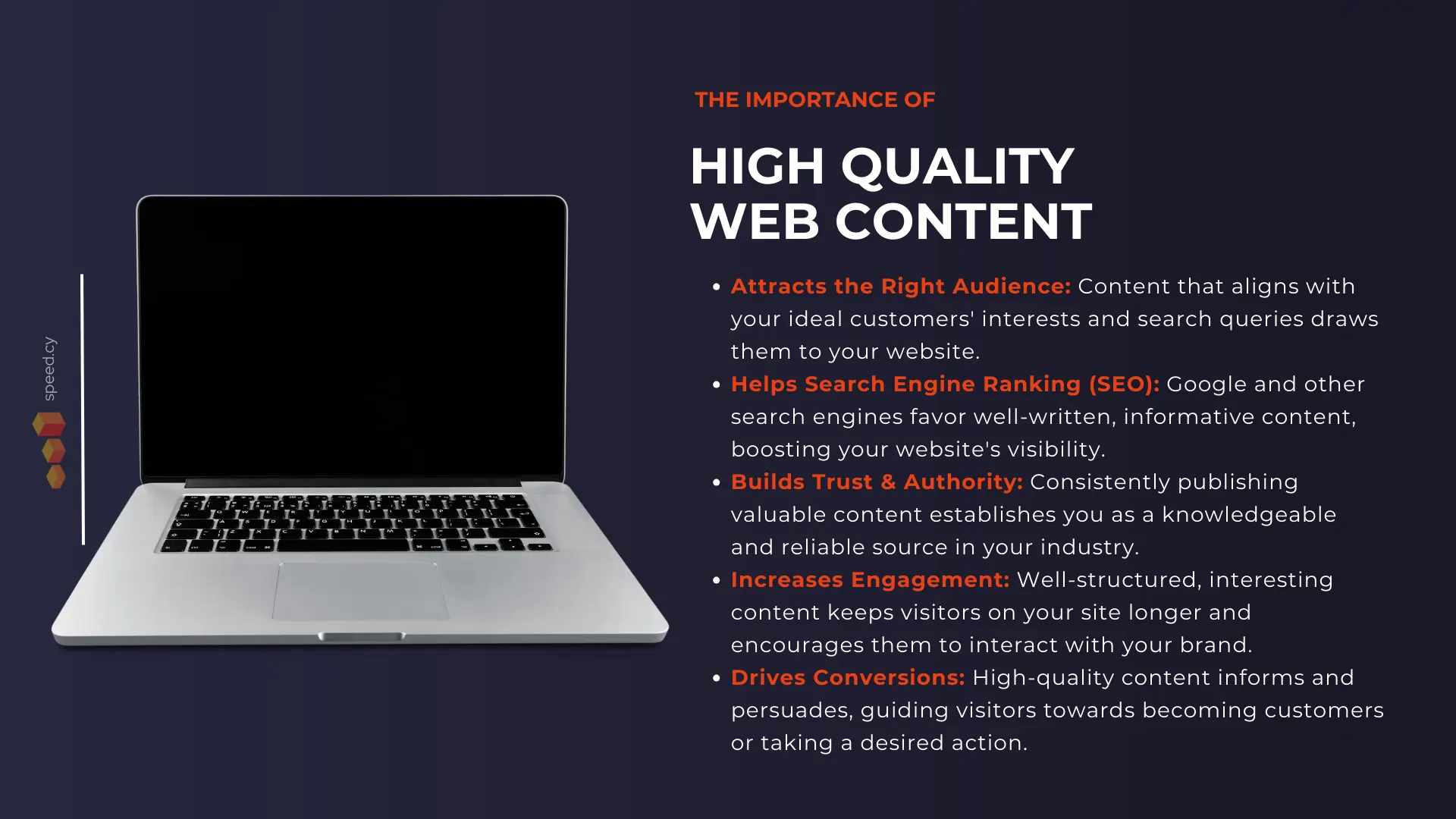Here are my top tips to recap:
- Use a mix of analytics tools to monitor rising trend activity in your niche.
- Research what’s resonating with your target audiences and competitors.
- Carefully evaluate which trends authentically align with your brand identity.
- Put a creative spin on trends to showcase your unique brand personality.
- Produce diverse and engaging content across platforms built around timely trends.
- Track performance through metrics like reach, engagement, sales, and sentiment.
- Build lasting relationships with trend participants to convert them into loyal brand advocates.
As a online marketing, I know social media plays a key role for my business, and staying on top of the latest trends on platforms like Instagram, TikTok, and LinkedIn is one of the most important parts of my job. With new viral sounds, challenges, filters, and more emerging daily, the social space evolves rapidly.
Harnessing these trends at the right moment can be a game-changer for driving brand engagement and connecting with audiences. However, in the everchanging world of social media, determining which trends are worth investing time and resources into sometimes feel overwhelming.
Through years of experience managing my social campaigns, I’ve learned crucial strategies for identifying relevant trends and integrating them seamlessly into my brand messaging. Here you will find my personal approach, I’ll share my proven process for leveraging trends to boost brand engagement across social channels.
Whether you’re looking to increase reach, engagement, website traffic, or sales, incorporating timely trends into your content strategy can offer a valuable edge.

My 7 Steps Process for Leveraging Social Media Trends
In short, check the below overview of my strategic process for capitalizing on social media trends:
- Identifying Relevant Trends with Analytics Tools
- Researching Trends Among Target Audiences and Competitors
- Evaluating Trends to Determine Alignment with Brand Messaging
- Brainstorming Creative Adaptations of Trends for Brand Personality
- Creating Diverse, Engaging Content Built Around Trends
- Measuring Performance of Trend Content Through Key Metrics
- Building Lasting Impact by Sparking Deeper Connections
Now that you know it, I’ll break down each step of this process in detail, along with the specific tools and strategies I use to execute trend-jacking campaigns effectively.
🔎 Step 1: Identifying Relevant Trends with Analytics Tools
The first step of any successful trend-jacking initiative is identifying which trends are gaining momentum across different social platforms. Catching trends early and capitalizing on them in the initial stages of virality can maximize their impact before they become oversaturated.
I rely on a combination of paid and free analytics tools to monitor trending topics, hashtags, influencers, and more on both an ongoing basis and daily. Here are some of my go-to platforms:
- Hootsuite – Hootsuite‘s social listening capabilities make it easy to identify global and location-based trends on Twitter and Instagram. I set up customized keyword and hashtag searches related to my brand’s niche so I can see real-time data on which topics are spiking in mentions and engagement.
- Brandwatch – For a more in-depth look at influencer and competitor trend activity, Brandwatch is one of my favorite paid tools. I use it to identify influencers driving certain trends so I can consider collaboration opportunities. Competitor keyword tracking shows me what trends my competitors are already leveraging to inspire my own brainstorming.
- Sprout Social – Sprout Social‘s sophisticated analytics and listening enable me to dig into demographic-specific trend data to unearth trends aligning with my target audiences. I look for trends resonating with my ideal buyer personas on platforms like TikTok and Twitter to inform content creation.
- Platform Analytics – I also regularly analyze engagement data, top hashtags, and trending sounds on the native analytics of platforms like Instagram, Facebook, and LinkedIn to spot any relevant emerging trends. Many platforms now have dedicated “Trends” sections showcasing current viral content themes.
Combining data from multiple analytics sources gives me a detailed, holistic view of the trend landscape so I can determine which trends show the most potential for my brand and audience.
🔎 Step 2: Researching Trends Among Target Audiences and Competitors
Analytics tools provide invaluable data, but I also conduct manual research to analyze how trends are playing out among my target audiences and competitors.
I spend time directly engaging with my niche communities on platforms like Reddit, TikTok, and Instagram to observe trending topics of conversation. For example, by exploring beauty hashtag communities on TikTok, I can pick up on the latest product review trends gaining views.
Competitor analysis is equally crucial. I regularly monitor the social accounts of competitors in my space to analyze the trends they are participating in successfully versus overlooking. This reveals openings for me to capitalize on trends competitors have yet to experiment with in my own unique way.
I also subscribe to Google News alerts for my brand name and relevant keywords. This enables me to catch any instances of competitors receiving press coverage for innovative trend-based campaigns.
🔎 Step 3: Evaluating Trends to Determine Alignment with Brand Messaging

With a robust list of potential trend opportunities identified, the most critical step is deciding which trends authentically align with my brand messaging and identity.
Jumping on a trend just because it’s going viral often backfires. I’ve found the trends that resonate most with audiences are those that feel like a natural fit for my brand. Forcing an ill-fitting trend comes off as inauthentic, damaging trust with my audience.
I host brainstorming sessions with my team to analyze trends from multiple angles. We consider questions like:
- Does this trend highlight our brand values or personality?
- Can we adapt this trend in a way that feels fresh and unique to our brand?
- Will our audience respond positively to this trend or find it irrelevant?
- Is this trend too risky or controversial for association with our brand?
This evaluation process ensures I only invest resources pursuing trends that strategically further my overarching social goals.
🔎 Step 4: Brainstorming Creative Adaptations of Trends
The most effective way to leverage trends is by putting a creative spin on them to stand out from the crowd. I brainstorm ways to adapt trending topics, hashtags, or formats to showcase my brand’s distinct personality.
A few examples of branded trend adaptations I’ve executed:
- Money Heist Filter – When the show Money Heist was trending, I created a branded filter featuring our company mascot “heisting” money from our competitors. Fans loved sharing selfies showcasing their support.
- Pillow Challenge Instagram Story – My brand’s playful social presence was a natural fit for the pillow challenge trend. I made an Instagram story tutorial for transforming our products into a pillow outfit that conveyed our fun brand identity.
- Niche Meme Account – To establish a regular presence in viral meme culture, I launched a meme account focused on jokes related to our industry. Followers tag us when sharing posts.
Sometimes I’ll also put a timely spin on evergreen content formats that are reliable engagement drivers. For example, tying pop culture moments or holidays into popular listicle or quiz formats can breathe new life into these classics.
Getting creative with trends is all about showcasing my brand’s personality. The options are endless!
🔎 Step 5: Creating Diverse, Engaging Content Built Around Trends

Once I’ve determined a trend aligns with my brand and ideated a creative adaptation, it’s time to produce captivating content that capitalizes on the trend’s viral momentum!
I diversify the formats I use to participate in trends, tailoring content style to each platform’s strengths:
TikTok – Fun, casual videos showing my brand embracing trending dances, sounds, or hashtags. TikTok is the place to showcase my brand personality through trends.
Instagram Reels – Similar to TikTok, I leverage Reels for short-form videos adapting trends in a bite-sized format.
Instagram Feed – More polished photos or graphics that artfully incorporate trending elements into my brand’s Instagram aesthetic.
Instagram/Facebook Stories – Quick videos or Boomerangs demonstrating my brand partaking in trending TikTok challenges or hashtags.
LinkedIn – Articles, blog posts, or updates analyzing trend impacts through an industry lens. I maintain a thought leadership perspective.
Twitter – Trending meme formats reimagined with my brand mascot or funny commentary on trending news relevant to my audience.
No matter the channel, I ensure content aligns with platform best practices and my audience’s expectations.
User-generated content is hugely valuable for trend content as well. I launch branded hashtags or challenges inviting my audience to create their own trendy content featuring our products. UGC expands my reach while showcasing authentic engagement.
🔎 Step 6: Measuring Performance of Trend Content Through Key Metrics
To determine the success of my trend content, I closely monitor key performance indicators including:
- Impressions/Reach – How many users saw my trend content? Growth in reach shows a trend resonating.
- Engagement Rate – Are people interacting with my trend content through likes, comments, and shares? High engagement rates signal content resonating with audiences.
- Website Traffic – Are trend posts driving traffic to my site? An uptick in referral traffic from social channels indicates successful content.
- Sales – At the end of the day, I want to see if trend content converts into sales. I track product links in bios, promo codes on trend posts, and overall sales numbers.
- Sentiment – I analyze user-generated comments and reviews to evaluate sentiment around my trend content. This helps me determine if a campaign backfired or fell flat with my audience.
By compiling data on how trend content performs across these metrics compared to my average numbers, I can clearly see which trends offer the highest ROI. I’ll then double down on expanding successful trends across more content and channels.
🔎 Step 7: Building Lasting Impact by Sparking Deeper Connections
While trends provide amazing topical opportunities, I always keep the bigger picture in mind. My goal is converting new audiences reached through trends into loyal brand advocates.
I focus on relationship-building by responding to all comments on trend content, hosting live Q&As related to trends, and consistently engaging with users who interact with my trend content.
Encouraging user-generated content related to trends also helps cement my brand as part of the social community. I make sure to re-share user photos featuring my products in trendy contexts.
Finally, I strategically tie my trend content back to my brand’s core identity and messaging. This reminds new audiences of the lasting value my brand provides beyond temporary trends.
By sparking and maintaining meaningful connections beyond surface-level trend engagement, I turn viral moments into lasting brand relationships. Patience and persistence pay off!
Key Takeaways for Leveraging Trends Like a Pro
Mastering trend-jacking on social media is an invaluable but challenging skill. By following the strategic process I’ve outlined step-by-step, you can learn to capitalize on the right trends at the right moment to drive real results.
With the lightning fast pace of social media, the trends to tap into are always changing. But by sticking to this strategic process, you can be confident you are leveraging trends to effectively boost awareness, engagement, and growth for your brand. What trend will you capitalize on next?





